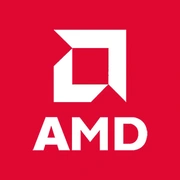AMD A6-7400K

AMD A6-7400K: Budget Processor for Office and Multimedia. Comprehensive Review for 2025
Introduction: The AMD A6-7400K's Place in 2025
The AMD A6-7400K processor, released in 2014, remains a niche solution for ultra-budget builds by 2025. Despite its outdated architecture, it attracts attention due to its price (new units range from $35 to $45) and integrated graphics. In this review, we'll explore who it suits today and what pitfalls to consider.
Key Specifications: What's Inside?
Architecture and Manufacturing Process
The A6-7400K belongs to the Kaveri family and is built on a 28nm process. It features a hybrid architecture that combines a CPU and GPU on a single chip (APU).
- Cores: 2 cores/2 threads with a base frequency of 3.5 GHz (turbo up to 3.9 GHz).
- Cache: L1 — 96 KB, L2 — 1 MB.
- Graphics: Radeon R5 (256 shader processors, 756 MHz clock speed).
Key Features:
- Support for DirectX 12 and Mantle API (for game optimization).
- Turbo Core technology for automatic overclocking.
- Independent frequencies for CPU and GPU.
Performance:
- Geekbench 6: 445 (Single-Core), 627 (Multi-Core). For comparison, the modern Ryzen 3 5300G scores around ~1500/4500.
- Gaming performance (2025) on low settings: 15–25 FPS in CS:2, Dota 2; up to 40 FPS in Minecraft.
Compatible Motherboards: Socket and Chipsets
The A6-7400K uses the FM2+ socket, which limits motherboard options. Current choices (new):
- ASRock A68M-HD+ ($45–55): A68H chipset, 2 DDR3 slots, HDMI.
- Gigabyte GA-F2A78M-DS2 ($50–60): A78 chipset, USB 3.0 support.
Choosing Tips:
- Check for 65W TDP support in the specifications.
- For overclocking (the "K" index), reliable VRM boards are needed, such as MSI A88XM-E35.
Important: FM2+ is a dead platform. Upgrading to more powerful processors (e.g., A10-7850K) will yield minimal gains in 2025.
Memory: DDR3 and Limitations
The A6-7400K works only with DDR3:
- Supported frequencies: up to 2133 MHz (in overclocking mode).
- Recommended size: 8–16 GB (2 modules for dual-channel mode).
Example Configuration:
- 2x4 GB DDR3-1866 (Patriot Signature, $20 per kit).
Issues:
- DDR3 lags behind DDR4/DDR5 in bandwidth.
- Maximum capacity is 64 GB, but that's excessive for this processor.
Power Supply: How Many Watts Do You Need?
The processor's TDP is 65W, but the system requires extra headroom:
- Minimum: 400W (for example, EVGA 400 N1, $35).
- With Headroom: 450-500W (Corsair CX450, $55).
Tips:
- Don't skimp on the PSU: cheap models may perform unstably under peak loads.
- If you plan to use a discrete graphics card (e.g., GTX 1650), opt for a 500W PSU.
Pros and Cons of the A6-7400K in 2025
Pros:
- Price: One of the cheapest processors with graphics.
- Energy Efficiency: Suitable for compact PCs without active cooling.
- Simplicity: Ideal for a "one-day" build (e.g., kiosks, terminals).
Cons:
- Weak Performance: It struggles with modern applications (Photoshop 2025, Blender).
- Outdated Platform: No support for NVMe, USB 3.1, Wi-Fi 6.
- Limited Upgrade Path: Maximum upgrade is to an A10 series APU, which is also outdated.
Use Cases: Where is the A6-7400K Still Relevant?
1. Office Tasks:
- Document work, browsing (10+ tabs), Zoom.
- Example: PC for a cashier with Windows 11 LTSC.
2. Multimedia:
- Watching 1080p videos (H.264), streaming through YouTube.
- Limitation: 4K is not supported.
3. Light Gaming:
- Indie games (Stardew Valley, Terraria), emulators up to PS1.
4. Servers:
- NAS for home use (OpenMediaVault).
Comparison with Competitors
AMD Athlon 3000G (Zen, 14nm):
- Price: $55.
- Pros: Supports DDR4, Vega 3 (30% stronger graphics).
- Cons: AM4 socket requires more expensive motherboards.
Intel Pentium Gold G6400 (Comet Lake, 14nm):
- Price: $60.
- Pros: Higher IPC, supports DDR4-2666.
- Cons: UHD 610 graphics are weaker than Radeon R5.
Conclusion: The A6-7400K only wins in price, but falls short in upgrade potential.
Practical Building Tips
1. Motherboard: Choose models with HDMI and USB 3.0 (ASRock A68M-HD+).
2. Memory: 8 GB DDR3-1600 is the minimum for Windows 11.
3. Storage: An SSD SATA (Kingston A400, 240 GB — $25) will speed up the system.
4. Cooling: The stock cooler is sufficient, but for quiet operation, a Deepcool GAMMAXX 400 ($20) is suitable.
5. Case: Mini-ITX (Cooler Master Elite 110) for a compact build.
Warning: Avoid installing powerful graphics cards — the CPU will become a bottleneck.
Final Verdict: Who is the A6-7400K Suitable For?
This processor is a good choice if:
- Your budget is strictly limited ($150–200 for the entire build).
- You need a PC for basic tasks (office work, internet, video).
- A low-power system is required (e.g., for 24/7 operation).
Alternative: If your budget allows for an additional $50–70, it's better to opt for the Athlon 3000G or a used Ryzen 3 2200G — they will provide better future-proofing.
Conclusion: In 2025, the A6-7400K is a choice for those who value minimalism and do not plan on upgrading. For everyone else, there are more modern solutions available.
Basic
CPU Specifications
Memory Specifications
GPU Specifications
Benchmarks
Compared to Other CPU
Share in social media
Or Link To Us
<a href="https://cputronic.com/index.php/cpu/amd-a6-7400k" target="_blank">AMD A6-7400K</a>